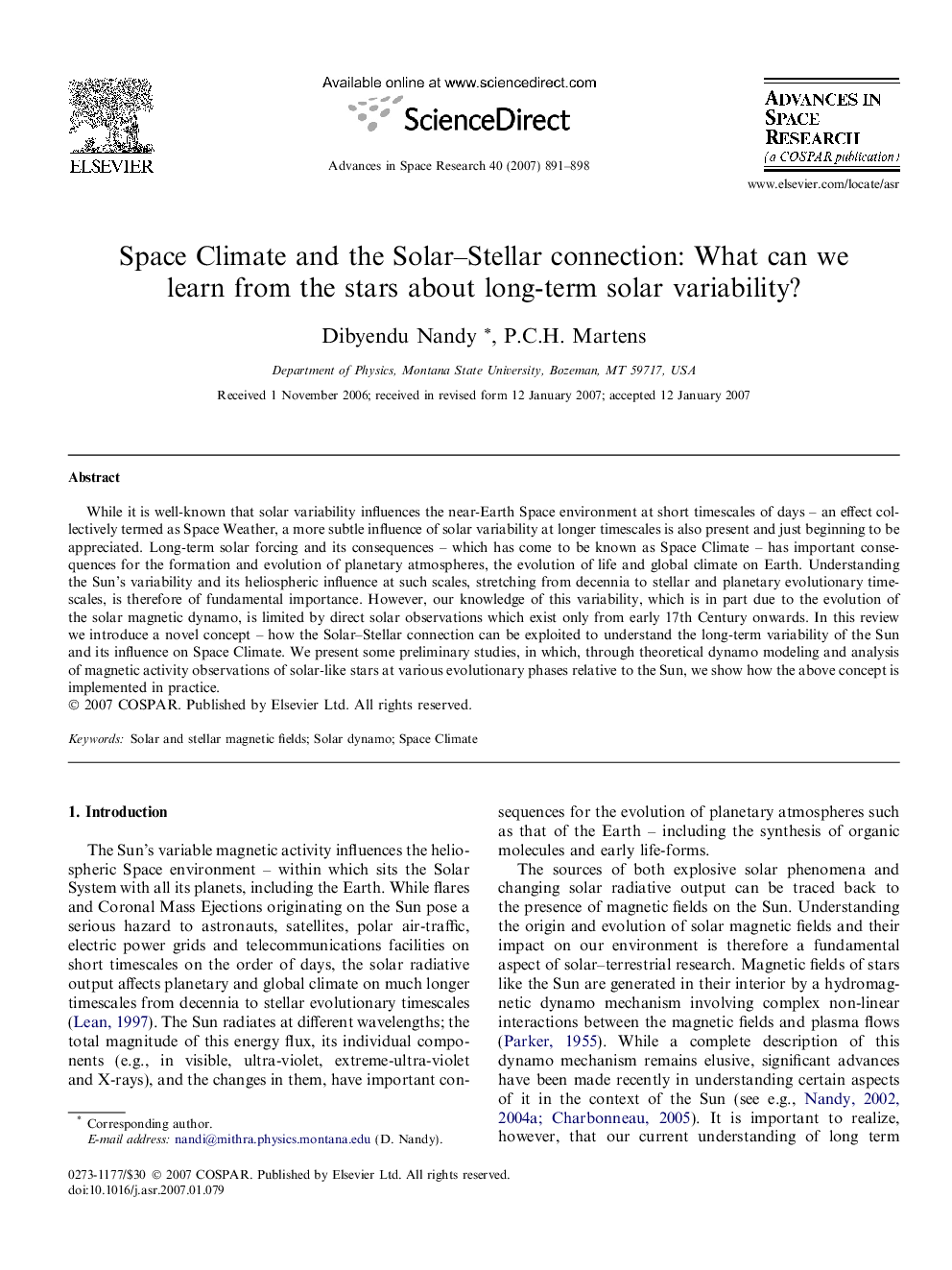| Article ID | Journal | Published Year | Pages | File Type |
|---|---|---|---|---|
| 1767022 | Advances in Space Research | 2007 | 8 Pages |
While it is well-known that solar variability influences the near-Earth Space environment at short timescales of days – an effect collectively termed as Space Weather, a more subtle influence of solar variability at longer timescales is also present and just beginning to be appreciated. Long-term solar forcing and its consequences – which has come to be known as Space Climate – has important consequences for the formation and evolution of planetary atmospheres, the evolution of life and global climate on Earth. Understanding the Sun’s variability and its heliospheric influence at such scales, stretching from decennia to stellar and planetary evolutionary timescales, is therefore of fundamental importance. However, our knowledge of this variability, which is in part due to the evolution of the solar magnetic dynamo, is limited by direct solar observations which exist only from early 17th Century onwards. In this review we introduce a novel concept – how the Solar–Stellar connection can be exploited to understand the long-term variability of the Sun and its influence on Space Climate. We present some preliminary studies, in which, through theoretical dynamo modeling and analysis of magnetic activity observations of solar-like stars at various evolutionary phases relative to the Sun, we show how the above concept is implemented in practice.
